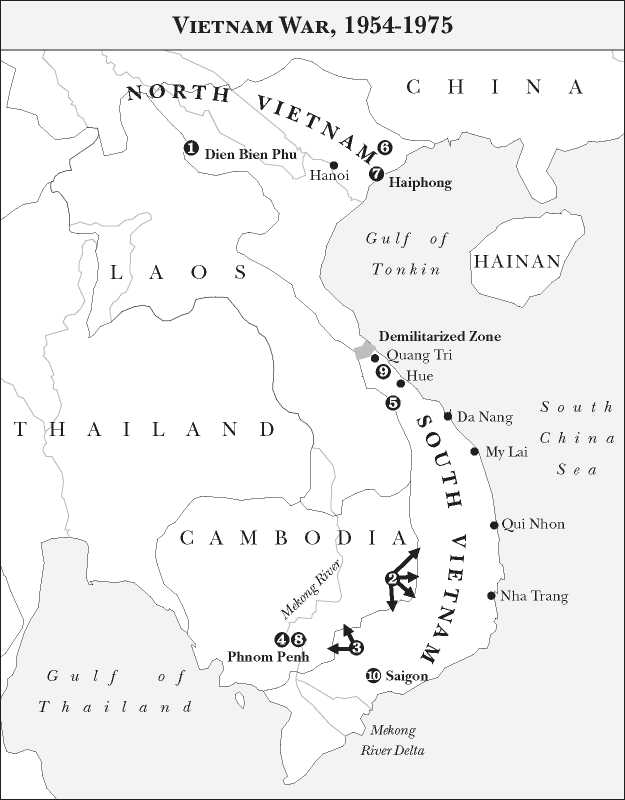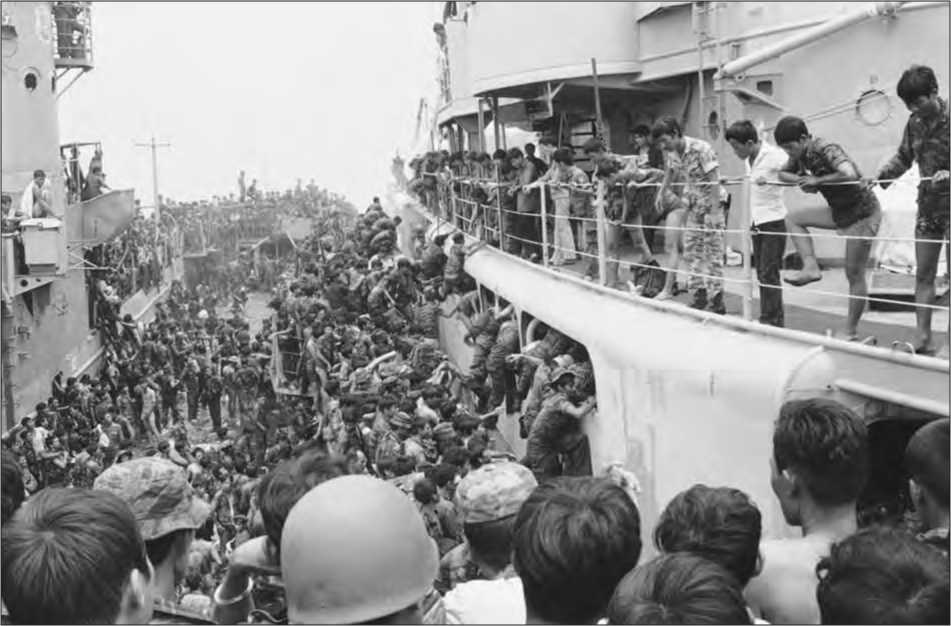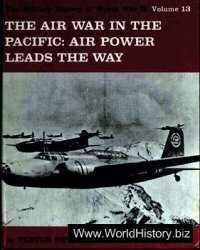The Event: Military conflict in which the United States provided large-scale military assistance to the South Vietnamese government’s unsuccessful effort to repel a takeover by North Vietnam’s communist regime Date: Early 1960’s to 1975 Location: Southeast Asia
Significance: American military involvement in the internal war in Vietnam spread to the adjacent countries of Laos and Cambodia, and the eventual communist victories in all three countries triggered a massive exodus of peoples, more than 2 million of whom immigrated to the United States. As the United States had experience almost no immigration from Southeast Asia before the war, the assimilation of these immigrants presented new challenges to both the immigrants and the United States.
During the long years of the Cold War, the United States defended noncommunist governments throughout the world. After France withdrew from its Southeast Asian colonies in 1954, an international agreement partitioned the former French Indochina into Laos, Cambodia, and North and South Vietnam. The division of Vietnam was intended to be temporary, but the fact that the North had a communist government and the South had a pro-Western government almost guaranteed future conflict. During Operation Passage to Freedom from August, 1954, to May, 1955, the U. S. Navy transported 310,000 primarily Roman Catholic Vietnamese from North to South Vietnam. After this time, a civil war developed in which the North sent troops into South Vietnam in an attempt to take over the entire country by force.
Immigration During the Vietnam War
American military involvement in the war in Vietnam began during the early 1960’s and escalated gradually until the United States itself was

(1) Last French position falls, 1954. (2) Tet Offensive, January, 1968. (3) Cambodian invasion, April-May, 1970. (4) Sihanouk falls, April, 1970. (5) Laotian incursion, February, 1971. (6) Areas of U. S. bombing, 1972. (7) Mining of Haiphong Harbor, May, 1972. (8) Lon Nol falls, April, 1975. (9) North Vietnamese offensive, spring, 1975. (10) South Vietnam surrenders, April 20, 1975.
One of the primary combatants. By 1969, the peak year of direct American military involvement, 541,000 American soldiers were serving in Southeast Asia, along with thousands of civilian support personnel. In 1964, before American military involvement began in earnest, only 603 Vietnamese were known to be living the United States. By the time the United States withdrew from Vietnam in 1975, that figure had risen to about 20,000. Most of these immigrants were Vietnamese women who
Had married American military personnel. However, that large increase in Vietnamese immigration to the United States was only a fraction of the numbers of immigrants who would arrive after the war.
Meanwhile, as communist North Vietnamese troops moved through Laos and Cambodia to reach South Vietnam, the governments of both neighboring countries became involved in the war. These developments help trigger communist insurgencies in Laos and Cambodia that helped lead both countries into economic and political chaos, but few Laotians and Cambodians who fled the disorders found their way to the United States. This was partly because direct American involvement in those countries was initially slight.
Postwar Immigration
Recognizing that it had become immersed in an unwin-nable war, the United States began withdrawing its combat troops from Southeast Asia in early 1973. As American troops were leaving, the war continued and communist victories in Vietnam, Laos, and Cambodia, soon followed. On April 17, 1975, the fervently communist Khmer Rouge faction captured Phnom Penh, the capital of Cambodia, and began a murderous campaign against its political rivals. Two weeks later, North Vietnamese troops occupied Saigon, the capital of the South Vietnamese government, which then collapsed, ending the Vietnam War. In December, communists completed their conquest of Laos.
The communist victories in Southeast Asia triggered a massive exodus of people who had supported the anticommunist regimes and cooperated with

South Vietnamese Marines leaping aboard an American naval vessel helping to evacuate Da Nangin April, 1975. (AP/ Wide World Photos)
The American military. Many of these refugees eventually found their way to the United States. The biggest wave of refugees, by far, to reach America came from Vietnam. As the war was ending, the U. S. government helped evacuate about 65,000 Vietnamese on airplanes and on naval vessels anchored off South Vietnam. Another 65,000 Vietnamese reached American ships and bases on their own. Much smaller numbers of refugees from Laos and Cambodia succeeded in escaping. In 1975, about 4,600 Cambodians made it to the United States. Escaping from landlocked Laos was more difficult, and only about 800 Laotian refugees reached the United States. However, many Laotian Hmong who had fought against the communists alongside Americans fled into neighboring Thailand. From there, 10,200 of the Hmong refugees reached the United States in 1976.
In response to the growing refugee crisis in Southeast Asia, the U. S. Congress passed the Indochina Migration and Refugee Assistance Act shortly after the Vietnam War ended. Under this law, resettlement assistance was granted to some 130,400 refugees in 1975 alone. Most of these refugees were Vietnamese.
Continuing Postwar Immigration
Southeast Asia’s postwar refugee exodus did not end in 1975. Because of the harsh and sometimes murderous policies of the region’s communist governments, refugees continued to flee the region. This exodus accelerated in late 1978, and many refugees risked their lives by attempting to leave by sea on small boats. In response to this new crisis, the United States again lent assistance to the refugees by supporting the efforts of the United Nations High Commissioner for Refugees (UNHCR). In May, 1979, the UNHCR worked out an agreement with the Vietnamese government to establish what was called the Orderly Departure Program (ODP), which was designed to assist Vietnamese who wished to emigrate to Western countries. The United States accepted about one-half of the people leaving Vietnam under this program, as well as many of the boat people. Moreover, in July, 1979, the United States agreed to take in anticommunist refugees from the countries of their first arrival, such as Thailand. More U. S. legislation designed to assist refugees followed.
The Refugee Act of 1980 established the Office of Refugee Resettlement in the United States. To address the plight ofAmerasians, children ofAmeri-can fathers and Asian mothers, the U. S. Congress passed both the Amerasian Immigration Act of 1982 and the Amerasian Homecoming Act of 1987. Through these two programs, some 25,000 Vietnamese Amerasians and 60,000-70,000 of their real or paper relatives immigrated to the United States.
In November, 2005, the United States and Vietnam agreed to a new program to facilitate the immigration to the United States of Vietnamese who had been interned in communist reeducation camps. Called the Humanitarian Resettlement Program, this venture expired on June 25, 2008, but one year later, the United States was still accepting immigrants whose processing had been delayed.
Summary
As a direct result of the Vietnam War, about 770,000 Vietnamese, 260,000 Lao and Hmong people, and 146,000 Cambodians immigrated to America as refugees between 1975 and 2008—a total of about 1,176,000 people. In addition, more than 753,000 nonrefugee immigrants were accepted from Southeast Asia—about 623,000 from Vietnam, 77,000 from Cambodia, and 53,000 from Laos. It can thus be fairly argued that the approximately 2,300,000 million people of Vietnamese, Cambodian, and Lao heritage living in the United States in 2007 owe their ties to America to the Vietnam War.
R. C. Lutz
Further Reading
Desbarats, Jacqueline. “Indochinese Resettlement in the United States.” In The History and Immigration of Asian Americans, edited by Franklin Ng. New York: Garland, 1998. Good overview of first Southeast Asians who came to the United States after the Vietnam War and their adjustment to American society.
Detzner, Daniel. Elder Voices: Southeast Asian Families in the United States. Walnut Creek, Calif.: AltaMira Press, 2004. Studies of forty leaders of Southeast Asian immigrant communities in the United States that illuminate postwar immigration issues.
Le, Cuong Nguyen. Asian American Assimilation. New York: LFB Scholarly Publishing, 2007. Includes concise description of how the Vietnam War led to Southeast Asian immigration to the United States, using census data to assess factors helping the immigrants adapt successfully to life in the United States. Excellent bibliography. Schulzinger, Robert D. “The Vietnamese in America.” In A Time for Peace: The Legacy of the Vietnam War. New York: Oxford University Press, 2006. This chapter in Schulzinger’s book offers a sympathetic description of Vietnamese refugees in America and discusses their paths to assimilation and success.
Vo, Nghia M. Vietnamese Boat People, 1954 and 19751992. Jefferson, N. C.: McFarland, 2006. Focusing on the waves of Vietnamese immigration immediately after the Vietnam War, this book discusses how the immigrants adapted to life in the United States.
See also: Amerasian children; Amerasian Homecoming Act of 1987; Cambodian immigrants; Freedom Airlift; Hmong immigrants; Indochina Migration and Refugee Assistance Act of 1975; Korean War; Laotian immigrants; Orderly Departure Program; Refugees; Vietnamese immigrants.




 World History
World History









